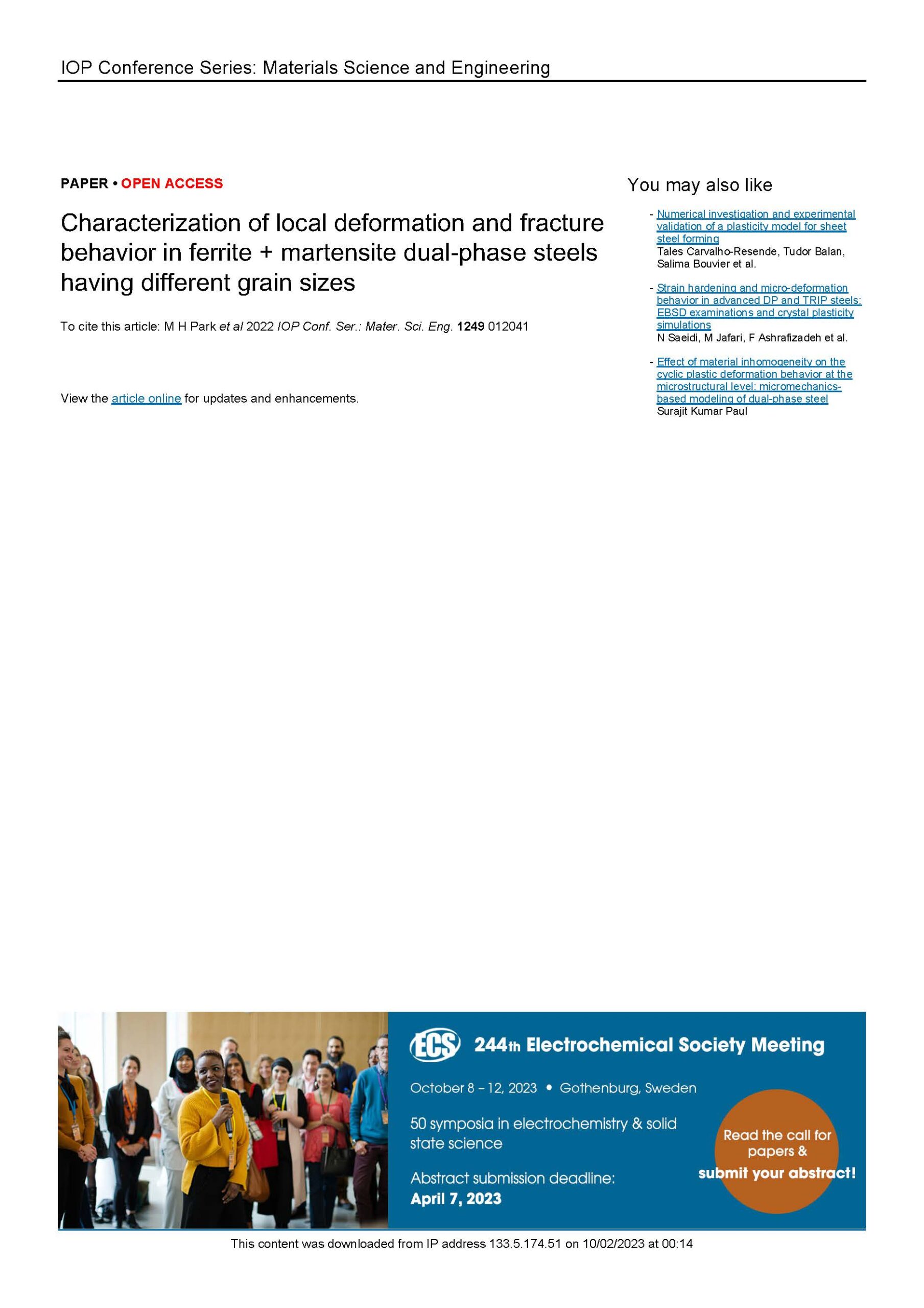Characterization of local deformation and fracture behavior in ferrite + martensite dual-phase steels having different grain sizes
IOP Conf. Series: Materials Science and Engineering, 1249 (2022), No.012041 DOI: 10.1088/1757-899X/1249/1/012041研究論文概要
Low carbon dual-phase (DP) steels composed of soft ferrite and hard martensite have been widely used in the automotive industry due to their good strength-ductility balance and large strain hardening ability. DP steels have a wide variation in mechanical properties depending on several microstructural features such as grain size, phase fraction and distribution. Among them, the grain refinement of DP steels is known to be an effective option for enhancing mechanical performance in strength and ductility (especially post-uniform elongation). However, the exact reason for the significant improvement of post-uniform elongation by grain refinement has not been fully understood. It is considered that the characterization of local deformation behavior and micro-void formation/growth behavior in connection with microstructures is an essential approach for understanding the enhanced post-uniform elongation realized in the fine-grained DP specimen. In the present study, we prepared two kinds of DP specimens with mean ferrite grain sizes of 14.9 μm (coarse-grained DP) and 7.1 μm (fine-grained DP), and carefully investigated local strain distribution of tensile specimen and micro-void formation/growth behavior using digital image correlation (DIC) analysis and SEM observations. The fine-grained DP specimen exhibited a gradual strain localization after necking and had sufficient strain capacity that could endure against fracture. The fine-grained DP structure had a great number of micro-voids in the necked region, but almost all the micro-voids maintained a very small size, which was contrasted with the case of coarse-grained DP specimen containing very large-sized micro-voids. Such a significant difference in micro-void size/number characters between two kinds of DP specimens would be one possible reason for exhibiting greatly different post-uniform elongation behavior.
